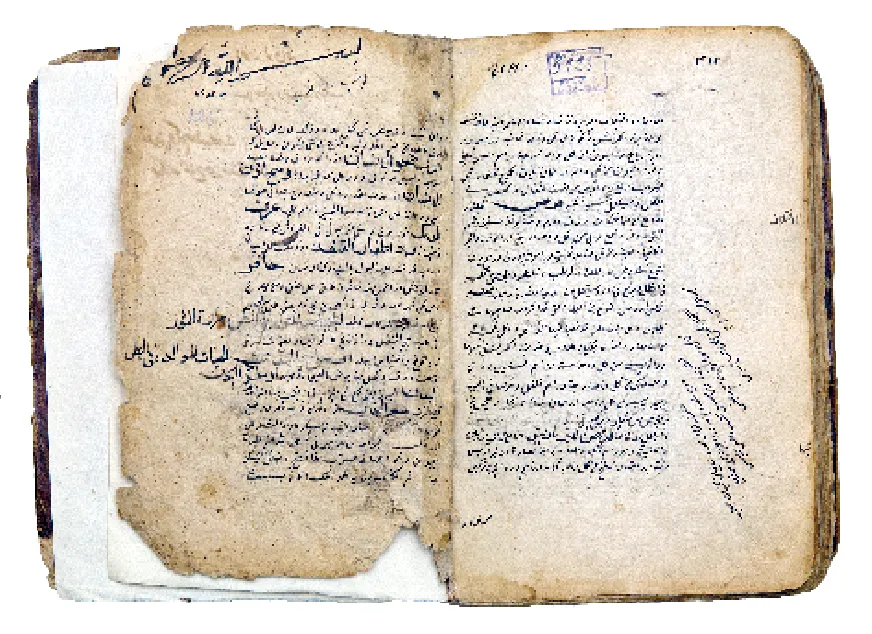In the medieval Oriental medicine the works dedicated to making complex drugs were referred to as “Aqrabadin” or “Qarabadin” (from Ancient Greek grafidion – a list of medications) which content usually corresponded with pharmacopeias. They usually consist of two parts: the first one describing types and methods of making complex drugs from simple ones, while the second work specifies types of diseases “from head to toe” for which a certain composite drug was prescribed.
The earliest treatises by Central Asian authors in the Arabic language are “Al- Adwiyat al-qalbiya” (Heart Medicines) by Ibn Sina in a manuscript dating to the 18th century and “Risala fi аl-sikanjubin” (The Treatise on Sikanjubin [acidulous syrup made of honey and vinegar referred to as Oxymel) by the same author, “Qarabadin al-Qalanisi” (Pharmacopoeia of Qalanisi) by Badr al-din ibn Muhammad al-Qalanisi (d. 1194) and “Usul al-tarakib” (Bases of Making [Compound drugs]) by the aforementioned Najib al-din Samarqandi.
The work titled “Ikhtiyarat-i Badi’i” (Selected [Pharmacopeia] Dedicated to Badi’) by ‘Ali ibn al-Husayn al-Ansari, also known as Khwaja Zayn al-Attar (1330 – 1404) in the Persian language was quite popular. The author served at the court of the ruler of Shiraz, Jalal al-din Shah Shuja (1364 – 1384) and dedicated his treatise to Princess Badi’ al-Jamal. There are 20 copies, the earliest of them was made in 1541 especially for Shaybanid ‘Abd al-Latif-khan. It features 594 painted pictures depicting plants, animals and vessels for preparing and storing medications.
There is a noteworthy work titled “Bahr al-khawass” (The Sea of Specific Properties) by the Kermani doctor Ni’mat Allah ibn Mughis al-din (d. 1477), where the author provides synonyms for simple drugs in five languages. There are three copies and the earliest of them dates from the 17th century.
You can learn more about this topic in the book-album “The Collection of the Al-Biruni Institute of Oriental studies, the Academy of Sciences of the Republic of Uzbekistan” (part two, “Miniature and Calligraphy”) (Volume XXII) from the series "Cultural Legacy of Uzbekistan in the World Collections".
The main sponsor of the project is the oilfield services company Eriell-Group.


